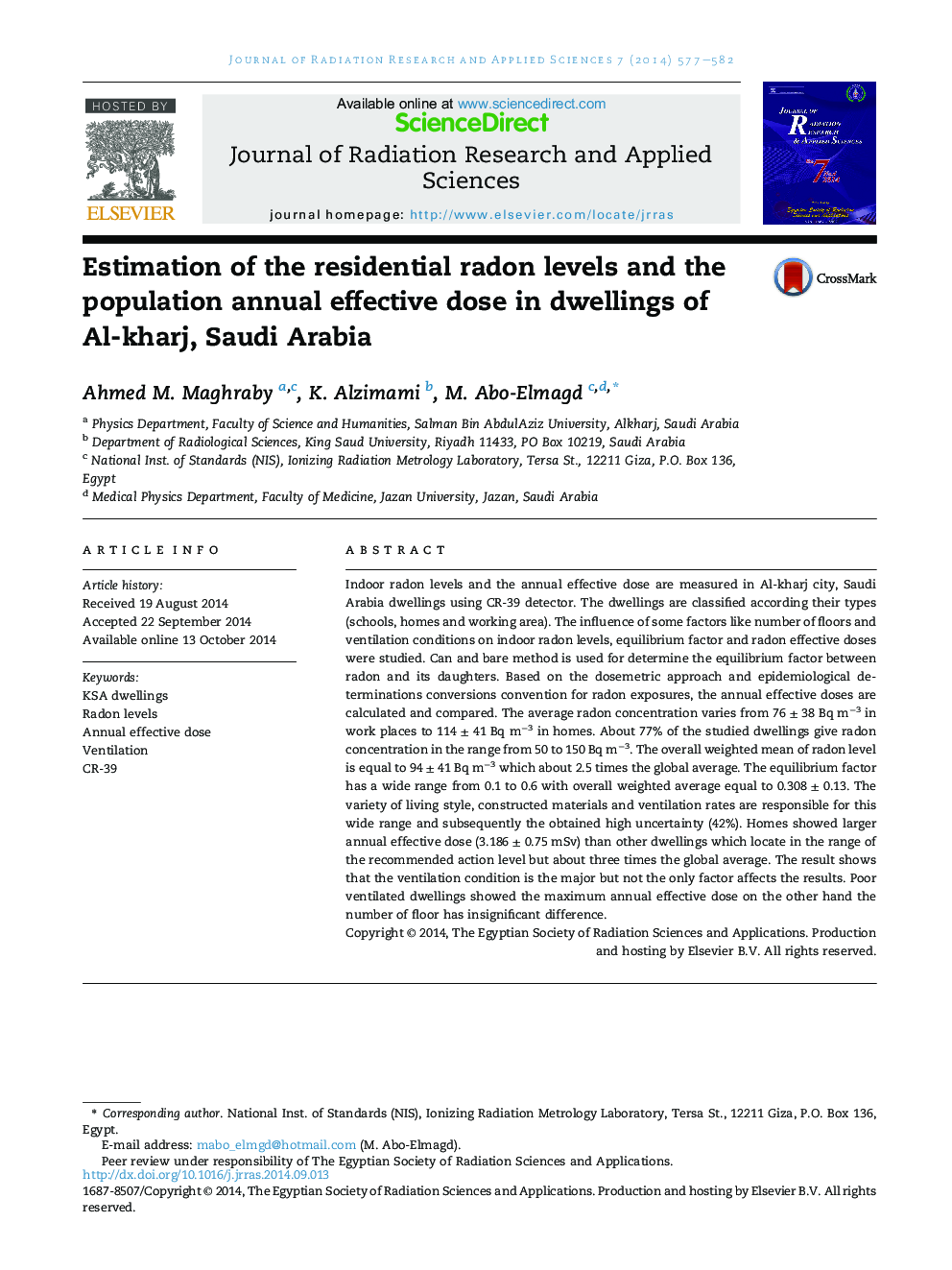| Article ID | Journal | Published Year | Pages | File Type |
|---|---|---|---|---|
| 1570438 | Journal of Radiation Research and Applied Sciences | 2014 | 6 Pages |
Indoor radon levels and the annual effective dose are measured in Al-kharj city, Saudi Arabia dwellings using CR-39 detector. The dwellings are classified according their types (schools, homes and working area). The influence of some factors like number of floors and ventilation conditions on indoor radon levels, equilibrium factor and radon effective doses were studied. Can and bare method is used for determine the equilibrium factor between radon and its daughters. Based on the dosemetric approach and epidemiological determinations conversions convention for radon exposures, the annual effective doses are calculated and compared. The average radon concentration varies from 76 ± 38 Bq m−3 in work places to 114 ± 41 Bq m−3 in homes. About 77% of the studied dwellings give radon concentration in the range from 50 to 150 Bq m−3. The overall weighted mean of radon level is equal to 94 ± 41 Bq m−3 which about 2.5 times the global average. The equilibrium factor has a wide range from 0.1 to 0.6 with overall weighted average equal to 0.308 ± 0.13. The variety of living style, constructed materials and ventilation rates are responsible for this wide range and subsequently the obtained high uncertainty (42%). Homes showed larger annual effective dose (3.186 ± 0.75 mSv) than other dwellings which locate in the range of the recommended action level but about three times the global average. The result shows that the ventilation condition is the major but not the only factor affects the results. Poor ventilated dwellings showed the maximum annual effective dose on the other hand the number of floor has insignificant difference.
